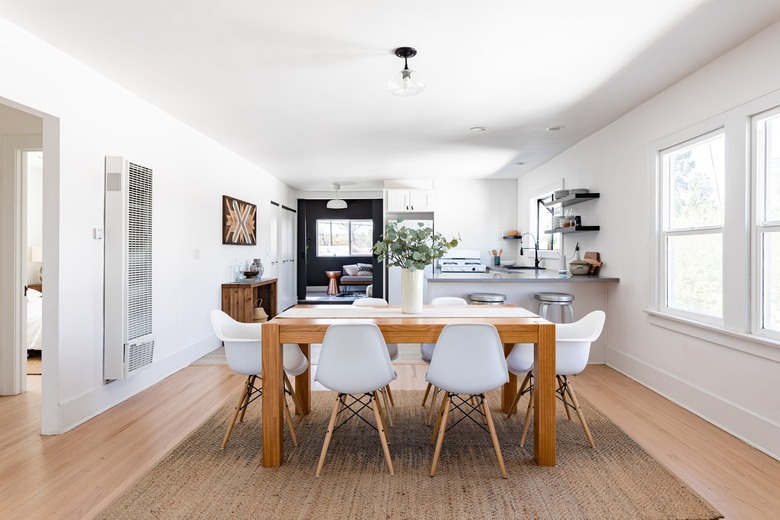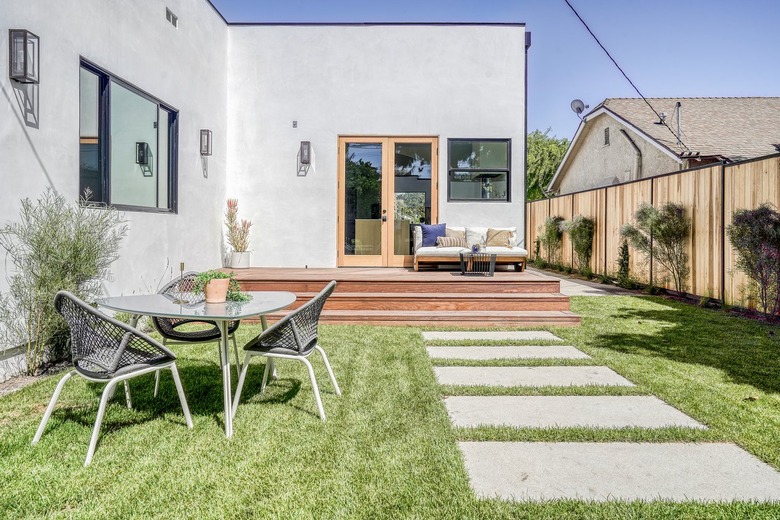An Expert Explains Why This Rental Style Is Increasingly Popular
While it's tricky to predict what will happen in real estate, 2021 saw even more factors come into play. With the pandemic continuing, and families and work life still changing, there were a lot of elements that affected how, when, and where we move. Zillow even came up with a name to summarize the increase in people moving from around spring of 2020 to a year after: the great reshuffling. In an April 2021 report, the company estimated that more than 11% of Americans had moved — and they didn't regret it. In fact, 80% of the people surveyed said they were happy about their decision.
Of course, the pandemic also resulted in one of the most challenging times for many. As early as 2020, Zillow started tracking how it was affecting rental prices. This year, a study by Apartment Guide found that rent had increased by around 20% year-over-year for a one-bedroom in the U.S.
How will 2022 shape up? It's hard to know, but Zillow has some insights, thanks to its hot housing takes for 2022 it seems that renters will likely be looking for bigger spaces. For starters, Zillow expects to see "demand for larger rentals to increase, including for single-family homes, as families stay in the rental market longer."
Why are people interested in large rentals?
Why are people interested in large rentals?
The report explains that this renewed interest is primarily due to the fact that "rising costs make it harder to save for a down payment [on a home]." The alternative is renting a space that gives you more square footage than a one-bedroom apartment.
"Space has come at a premium during the pandemic," Zillow Senior Economist Jeff Tucker tells Hunker. "One of the top reasons recent renters say they moved was to get more indoor and more outdoor space."
Tucker explains that "the single-family rental industry has been growing strongly over the last couple of years," with a "sharp rise in the construction of purpose-built rentals." (FYI: Purpose-built rentals are largely defined as structures specifically built for future long-term rental.)
That being said, "house-hunters are still struggling to find the right fit as they seek out their next rental home."
Besides the increased square footage, there are a few other factors that likely appeal to renters. For starters, Tucker points out that people have been quitting their jobs during the pandemic. As Harvard Business Review reports, the numbers are significant, with data from the U.S. Bureau of Labor Statistics showing that "4 million Americans quit their jobs in July 2021." Renting a home, rather than buying one, allows for more wiggle room in case a renter makes a career change, Tucker says.
That job change might also mean a major move — especially with some employers continuing to offer remote work — which involves the idea of starting over in a new place altogether. Buying a home somewhere unfamiliar, though, can feel daunting.
"A rental can be a great place to start when moving to a new city, as a home base for exploring and researching neighborhoods to find the perfect fit before committing to a home purchase," Tucker says.
Even so, changes in income and other challenges haven't made it easy for people to pay rent in 2021. The National Equity Atlas reports that "mounting rent debt and the potential for mass eviction is one of the most pressing equity issues created by the COVID-19 pandemic." That's apparent in this stark data point from the report: "As of mid-August 2021, 5.9 million renter households — 15% of all renters — were behind on their rent payments."
We'll be keeping an eye on insights from the experts next year to see how and why these numbers might fluctuate.

